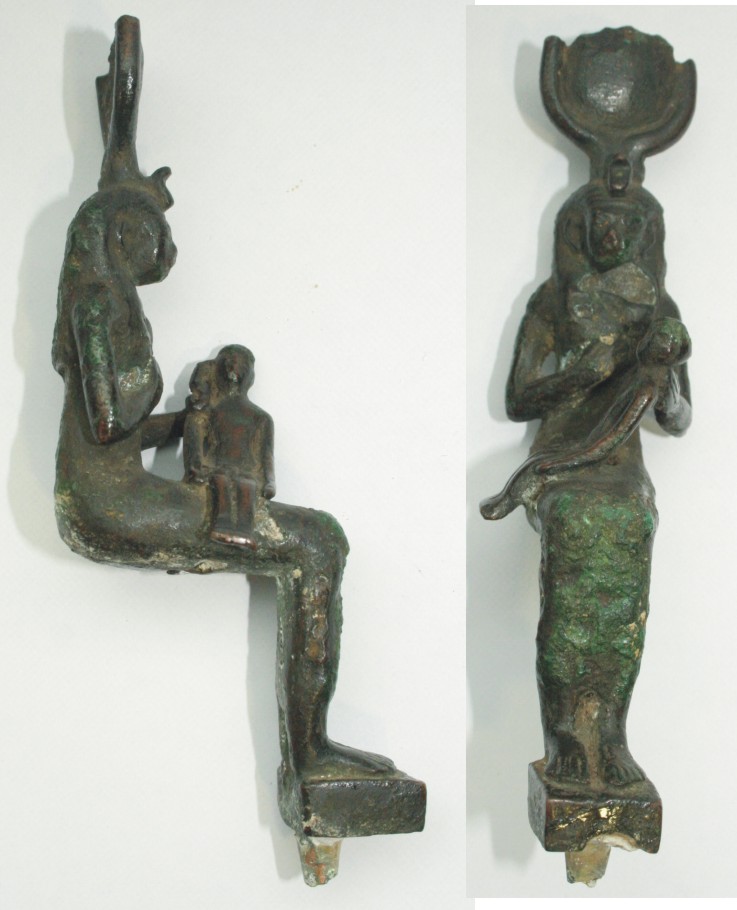W1374
W1374 Isis and Horus
 This statuette of the goddess Isis with the infant Horus has been kindly loaned to The Egypt Centre by Mrs. D. Ashworth.
This statuette of the goddess Isis with the infant Horus has been kindly loaned to The Egypt Centre by Mrs. D. Ashworth.
This is made from copper alloy and is 13cm high. Isis is shown in the typical attitude of suckling. The uraeus on her forehead is regal. The cow horns and solar disk usually belong to Hathor whose motherly aspect is mirrored here.
After he had been murdered by Seth, Isis collected and restored the pieces of her dead husband Osiris so that he could again regenerate. Thus, Horus could be conceived after his father’s death. He was then the heir to the living kingdom of Osiris.
In his role as the child of Isis, Horus is usually shown naked with the side-lock of youth. (The side-lock can here be seen on his right side of his head – Egyptian children were often shown with heads shaved apart from a single plaited ‘side-lock’). As the child of Isis he later became known to the Greeks as Harpocrates (from the Egyptian Har-pa-khered) and as such appears on such items as the cippus on display in the Egypt Centre in the Religion in The Home case. Harpocrates represents the newly born sun and was a protector against snake bites and scorpion stings.
In the Late Period and through to the Ptolemaic Period objects such as this were mass produced and placed in temples as votive offerings. The huge number of statues of Isis and Horus shows the importance of the cult of Isis, which by this period had overtaken that of Hathor, and also bears witness to the increasing cults of mother and child. Some have seen such cults as paralleling the Christian emphasis on Madonna and Child.
Further Reading
Capel, A., K. and Markoe, G., E. (eds.), (1996), Mistress of the House, Mistress of Heaven. Women in Ancient Egypt. New York. Hudson Hills Press pp. 126-128.
Other items associated with Isis
Other items showing Horus the Child (Harpocrates)